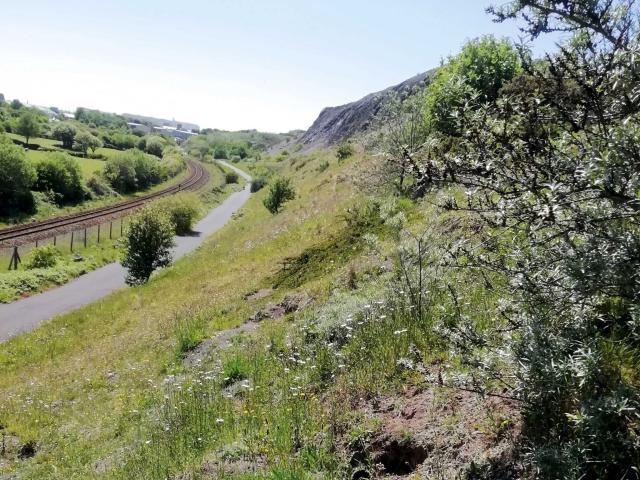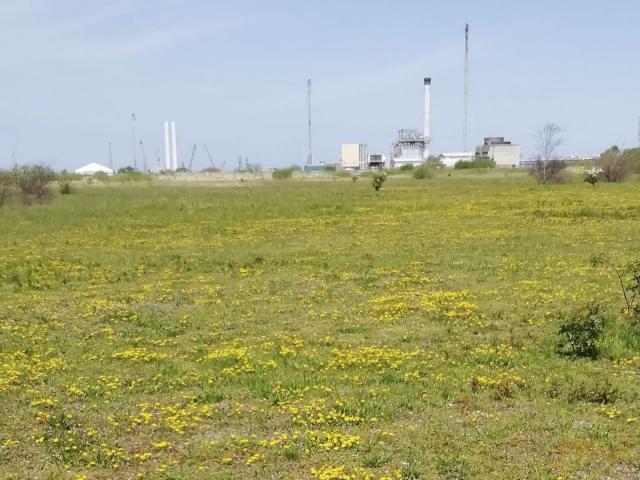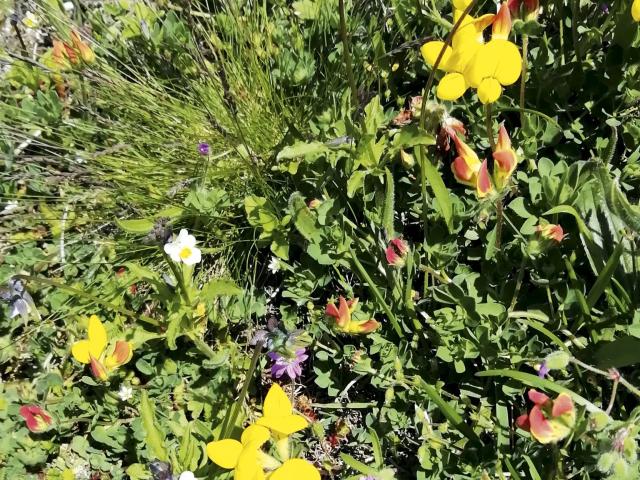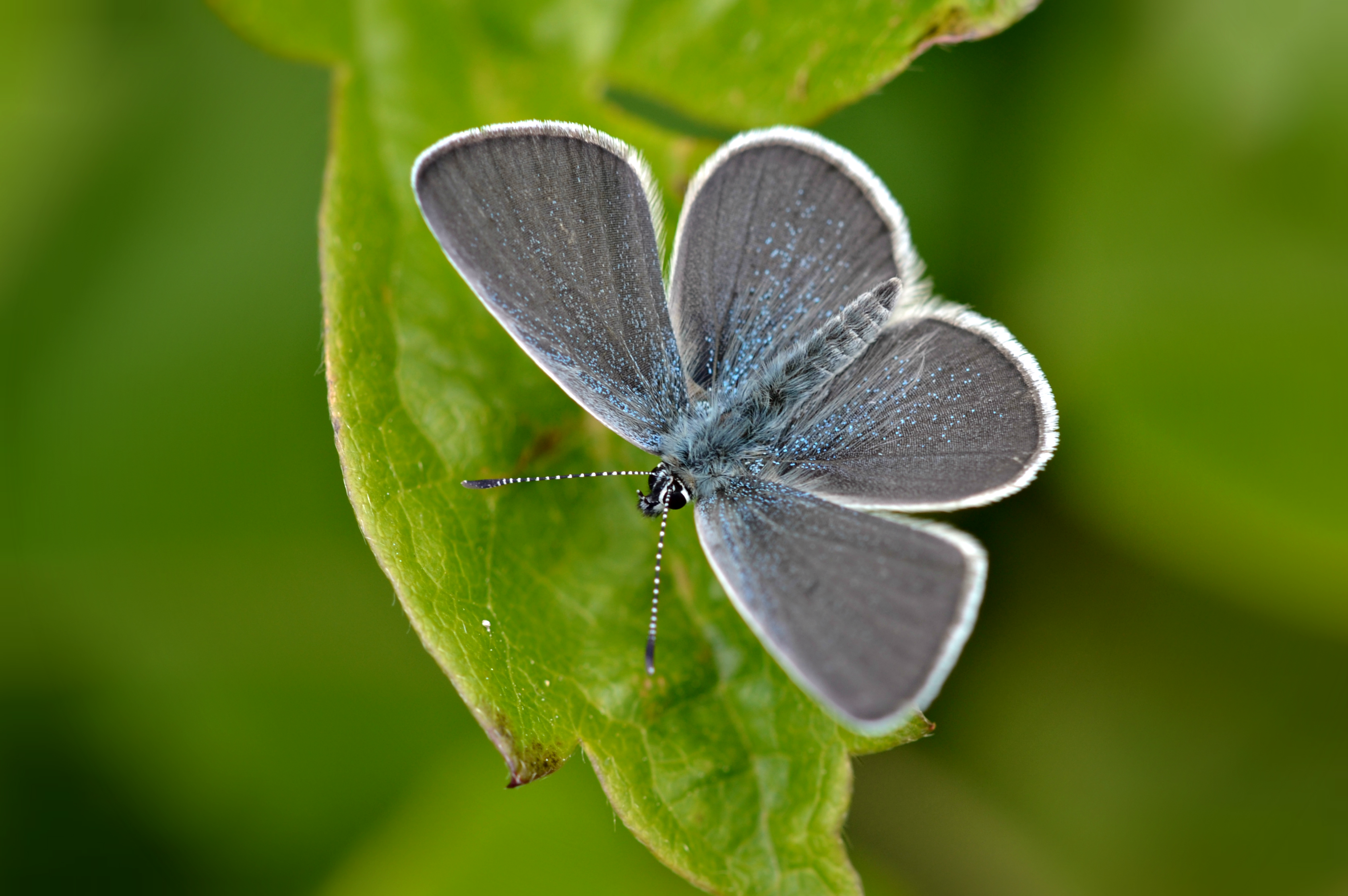With one of the most restricted distributions of breeding butterflies in northern England, we explore how we’re helping this species to spread its wings.
The Small Blue has a very restricted presence in the North. Its main stronghold is in the Cumbrian coastal strip between south Workington and Maryport, although recent surveys confirm the presence of outlying colonies further south, too.
Many Cumbrian sites share industrial origins and are are essentially sitting on years of steel slag waste. Most support good quantities of Kidney Vetch, the species’ sole larval food source.
Over time, both the number and area of occupied sites have decreased, mainly because of redevelopment, despite some very successful examples of habitat creation elsewhere. Frustratingly, there is plenty of apparently suitable, unoccupied habitat elsewhere in northern England – but most is too far away for the Small Blue to colonise without assistance.
Following a successful introduction of the Small Blue to the largest area of suitable unoccupied habitat in Cumbria, Ormsgill Slag Bank (near Barrow-in-Furness), using individuals from a site facing imminent development, it became apparent that the most effective means of compensating for ongoing losses of Small Blue colonies would be to introduce it further afield.
So, working with the Industry Nature Conservation Association (INCA), we identified a working industrial site in the lower Tees Valley that supported prolific quantities of the foodplant growing on a substrate of sand and weathered blast furnace slag, not dissimilar to sites in the butterfly’s Cumbrian stronghold.
Importantly, the site was not an island in an ocean of unsuitable habitat; the entire area surrounding the proposed release site had been reclaimed from the sea some years previously with much of the infill using sand and slag. The result is a mosaic of bare ground, early successional vegetation, scrub, elements of dune vegetation and a truly diverse invertebrate fauna that includes Grayling, Dingy Skipper, Six-belted Clearwing and a great many others. Discussions were held with the site owner, WoodPLC, which duly gave permission for an introduction of the Small Blue.


A mixed outlook
In 2019, two consignments of Small Blue butterflies, each comprising 15 females, were removed from Ormsgill Slag Bank (whose introduced population had by this time increased to several hundred), and were released at the recipient site, one week apart. By the strange laws that govern such matters, the weather preceding each series of captures consisted of several days of unbroken sunshine, while after the releases came equally prolonged periods of grey skies and rain… Regardless, one or two individuals were spotted once the weather improved and one instance of egg-laying was observed.
Over the following winter, partners discussed concerns that the introduced butterflies might have failed to reproduce, given the horrendous weather conditions that followed their release. A provisional plan of a further introduction was hatched and necessary permissions obtained in case spring surveys failed to detect the butterfly. The potential failure of the first releases was obviously a massive concern, as failure to reproduce by 30 female Small Blues in year one of the project would be a strong indicator that the species would be incapable of surviving in the long term.

In 2020 only three Small Blues were detected during monitoring. All were males seen close to the release site. Although finding any was a relief, the numbers involved fell far short of confirming that the releases had been an unmitigated success. Partners held their nerve and decided against further releases, waiting to find out whether the Small Blue could struggle through another winter from such a seemingly low base.
The surveys of 2021 and 2022 were very similar; monitoring yielded single-figure counts, again with no evidence of any propensity in the species to double its brood. And again, the only butterflies seen were near to the release point. There was no sign of the species multiplying and spreading in the way it did at Ormsgill, when presented with extensive, high-quality habitat.
The Small Blue makes a breakthrough
But following these low yields, 2023 proved to be the breakthrough year for the Small Blue in north-east England! The species was present in far higher numbers – not only at the release site but also on various sites nearby, with several recorders reporting seeing up to 30 during relatively short site visits. Several mating pairs have been seen and at the time of writing, the last of a second brood are on the wing. We will keep you updated with further progress, but the future of the Small Blue on Teesside has taken a sudden, perhaps overdue, turn for the better!
Small Blue boundaries
Drawing a rough boundary around the furthest scattered sightings suggests that the Small Blue on Teesside has now colonised around 15ha of habitat. Added to the roughly 30ha it now occupies at Ormsgill, the gains for the species have been fantastic!
- Recorders reported seeing up to 30 Small Blue at the new site in 2023, following single-figure counts in the preceding years.
- Prior to its reintroduction, the Small Blue was apparently absent from north-east England for over 70 years.
Dr Dave Wainwright
Head of Conservation for England


